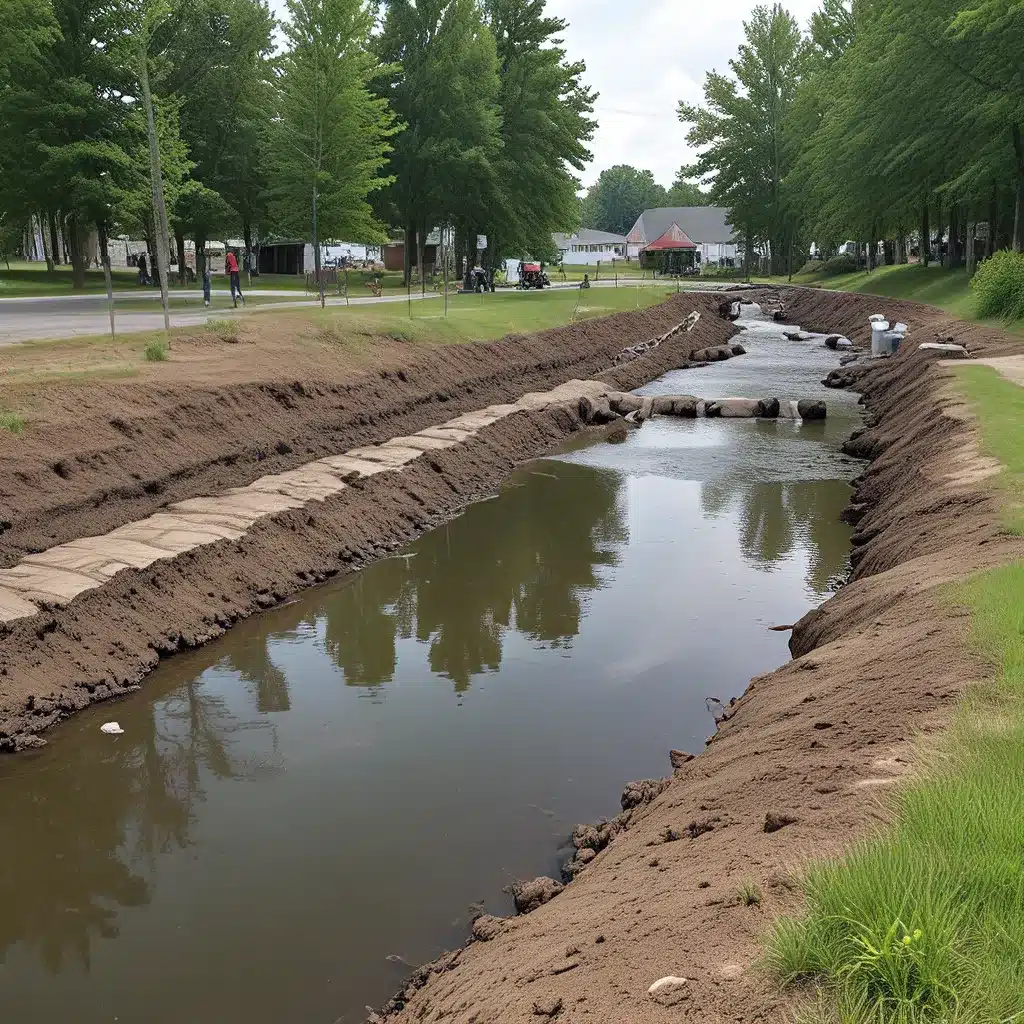
As someone who’s always been fascinated by the natural world and the delicate balance of our ecosystems, the issue of PFAS (per- and polyfluoroalkyl substances) contamination has been weighing heavily on my mind. These synthetic chemicals, often referred to as “forever chemicals,” have become a growing concern in communities across the country, threatening our most precious resource – clean water.
The PFAS Conundrum
It’s almost ironic, isn’t it? These chemicals were initially designed to make our lives easier, with applications ranging from non-stick cookware to fire-fighting foams. But little did we know, they would come back to haunt us, persisting in the environment for decades and seeping into our groundwater supplies. As I’ve been researching this topic, I’ve been struck by the sheer scale of the problem.
The White House recently announced a comprehensive government-wide approach to addressing PFAS contamination, with the Environmental Protection Agency (EPA) taking the lead. This is a welcomed effort, as PFAS have been detected in the drinking water of millions of Americans, potentially exposing them to serious health risks like thyroid disease, liver damage, and even cancer.
A Multifaceted Approach
What’s particularly interesting about the administration’s plan is the recognition that tackling PFAS requires a truly multifaceted approach. It’s not enough to just focus on cleaning up existing contamination – we need to address the problem at the source, hold polluters accountable, and ensure that science-based decision-making guides our actions.
One of the key components of the plan is the EPA’s PFAS Roadmap, a comprehensive strategy that outlines concrete steps to be taken over the next three years. This includes the EPA’s recent proposal to designate two of the most widely used PFAS as hazardous substances under the Comprehensive Environmental Response, Compensation, and Liability Act (CERCLA), also known as Superfund.
This move would increase transparency around PFAS releases and help hold polluters accountable for cleaning up their contamination. It’s a bold step, and one that I believe is crucial in tackling this complex issue.
Empowering Communities
But the administration’s plan doesn’t stop there. It also recognizes the importance of supporting small and disadvantaged communities, who are often the most vulnerable to PFAS contamination. The Bipartisan Infrastructure Deal, for example, includes $10 billion in grants to address emerging contaminants like PFAS through the State Revolving Funds and small and disadvantaged community programs.
This is a crucial investment, as many of these communities may lack the resources and expertise to navigate the complex web of PFAS remediation on their own. By providing targeted funding and support, the government can help ensure that everyone, regardless of their zip code, has access to safe and clean drinking water.
The Role of Research and Innovation
Of course, effectively tackling PFAS contamination also requires a strong foundation of scientific research and innovative solutions. As the American Institute of Chemical Engineers has reported, the Department of Defense (DOD) is leading the nation’s largest research and development program devoted to PFAS detection, treatment, and destruction, with over $150 million in investments.
This kind of cross-agency collaboration is essential, as it allows us to leverage the expertise and resources of various government entities to tackle this challenge from multiple angles. And the results have been promising, with the DOD and other agencies working closely with leading research institutions to develop new technologies and expand our understanding of these persistent chemicals.
A Renewed Focus on Transparency and Accountability
Another key aspect of the administration’s plan is a renewed focus on transparency and accountability. For too long, the public has been kept in the dark about the extent of PFAS contamination and the potential health risks. But that’s starting to change.
The White House has noted that the Food and Drug Administration (FDA) has expanded its representative testing of the food supply to detect potential PFAS contamination, while the Department of Homeland Security’s Federal Emergency Management Agency (FEMA) is working to better understand and mitigate PFAS exposure from fire training exercises and equipment use.
This kind of transparent and proactive approach is crucial in building public trust and ensuring that everyone has access to the information they need to make informed decisions about their health and the environment.
A Holistic Approach to Groundwater Remediation
But perhaps the most exciting aspect of the administration’s plan is the focus on a holistic approach to groundwater remediation. The EPA has announced that it is developing a national primary drinking water regulation for PFAS, which will help establish clear standards and guidelines for addressing contamination.
At the same time, the agency is working to improve our understanding of PFAS in the nation’s water systems, with the goal of better targeting and mitigating these harmful chemicals. And with the Bipartisan Infrastructure Deal’s investment in emerging contaminant remediation, communities across the country will have access to the resources they need to tackle PFAS head-on.
Embracing the Challenge
As I reflect on all of these efforts, I can’t help but feel a sense of cautious optimism. PFAS contamination is undoubtedly a complex and daunting challenge, but the Biden-Harris administration’s comprehensive approach gives me hope that we can make real progress in protecting our communities and our environment.
Of course, there’s still a long way to go, and I’m sure we’ll face setbacks and obstacles along the way. But by embracing the complexity of the problem, leveraging the power of science and innovation, and empowering local communities, I believe we can tackle PFAS head-on and ensure a brighter, cleaner future for all.
And who knows, maybe one day we’ll look back on this moment as a turning point in our mission to safeguard our most precious natural resources. After all, at Inland Waters Inc., we’re committed to being at the forefront of this fight, using our expertise and passion to help communities across the country navigate the challenges of PFAS contamination. So let’s roll up our sleeves and get to work – the future of our water supply depends on it.


